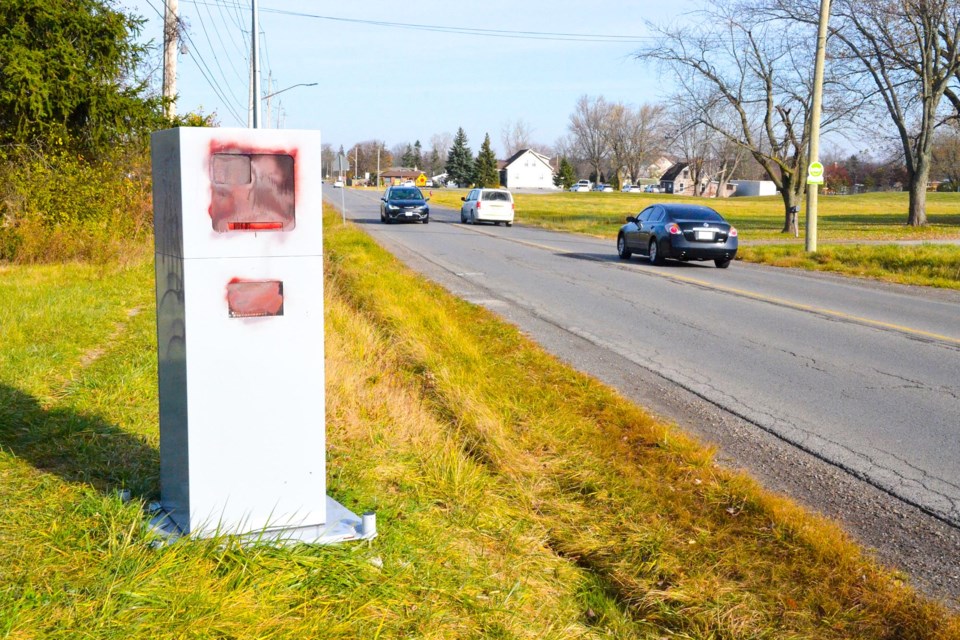The Region put one of those automated speed cameras at the end of my street, and it’s costing me money. Not because it caught me speeding; I’ve never had a speeding ticket in my life.
But because, to avoid going past the camera, I drive a different route every morning.
The speed camera sits between my house and my daughter’s daycare. So instead of driving the usual and most direct way there, I go the other direction out of my house and loop around the camera.
It adds, at most, maybe 30 seconds to my morning drive. But I do this twice a day because, as much as sometimes I would love to just leave my terrible-twos-toddler at daycare and enjoy some peace and quiet, I do have to pick her up eventually. So that’s a full extra minute of camera avoidance every day. That’s five minutes per week, or about 20 minutes every month.
I don’t have the time or energy to work out the litres-per-minute gas cost of all this extra driving, but it’s definitely costing me an extra non-zero amount of dollars to get to daycare now, all because of this silly speed camera.
I think speed cameras are dumb but not because of the reason most people do. Fort Erie is pretty small, so this speed camera has become the talk of the town. You can’t go to a Timmies or a corner store without stumbling into a conversation with someone about the new speed camera, and the most common thing I hear people whinge about is that it’s a “money grab” but that’s the one thing that’s not true.
People act like this speed camera is just printing money for the Region, like it’s gonna be some sort of enormous source of revenue for them. Couple things though. The Niagara Region’s annual budget is about $444 million. A couple speed cameras handing out $15 tickets is peanuts to the overall budget. A rounding error on a rounding error.
The second thing is that once the cost of the program is factored in, there’s likely very little, if any, money left over for the Niagara Region.
A couple speed cameras handing out $15 tickets is peanuts to the overall budget
First thing that happens is we have to pay some company from Arizona a daily fee for the camera. Why we went all the way to Arizona to get a speed camera is beyond my understanding, but that’s what we did.
Then there’s the operational and installation cost of the camera. Then, there’s the extra cost of fixing them every time someone vandalizes the camera, which has happened several times already. Then there’s the fact that the “automated” tickets aren’t really “automated”—it just sends the pictures to a police unit in Toronto, where some cop is paid quite handsomely to sit at a desk all day, look at photos of cars doing 5 km/h over the limit, and decide whether or not to mail them a ticket.
So how much money does this thing really generate? Well, we don’t know. The Region says it doesn’t know, but perhaps tellingly, they do note that once all those aforementioned expenses associated with running the cameras is paid off first, that “any money left over” is divided 50/50 between the Region and the 12 lower Niagara municipalities.
My guess is that the “any money left over” is going to be pretty close to zero, if not negative.
So this contraption catches you speeding, sends the photo to some cop in Toronto, and he mails you a ticket, which takes a few weeks to arrive. In those interim weeks, since you don’t even know you’ve been caught speeding, you haven’t actually adjusted your driving habits. The stated goal of the speed camera — to change driver behavior and slow people down — takes three weeks to kick in. Not exactly the most effective speed enforcement system if you ask me.
From what I can tell, the most immediate change to driver behavior is people doing what I do and driving a different route to avoid the camera. I’m not sure that’s the “driver behavior change” they are looking for either.
If the Niagara Region is serious about wanting to change motorists’ habits and slow drivers down, they should just stick to the highly effective speed dampening system they already have in place now: being so bad at maintaining roads that the pot holes and cracked pavement make it impossible to speed without busting an axle.
James Culic is going to start taking his daughter to daycare on his bike. Find out how to yell at him at the bottom of this page, or email whiplash-inducing letter to the editor.
